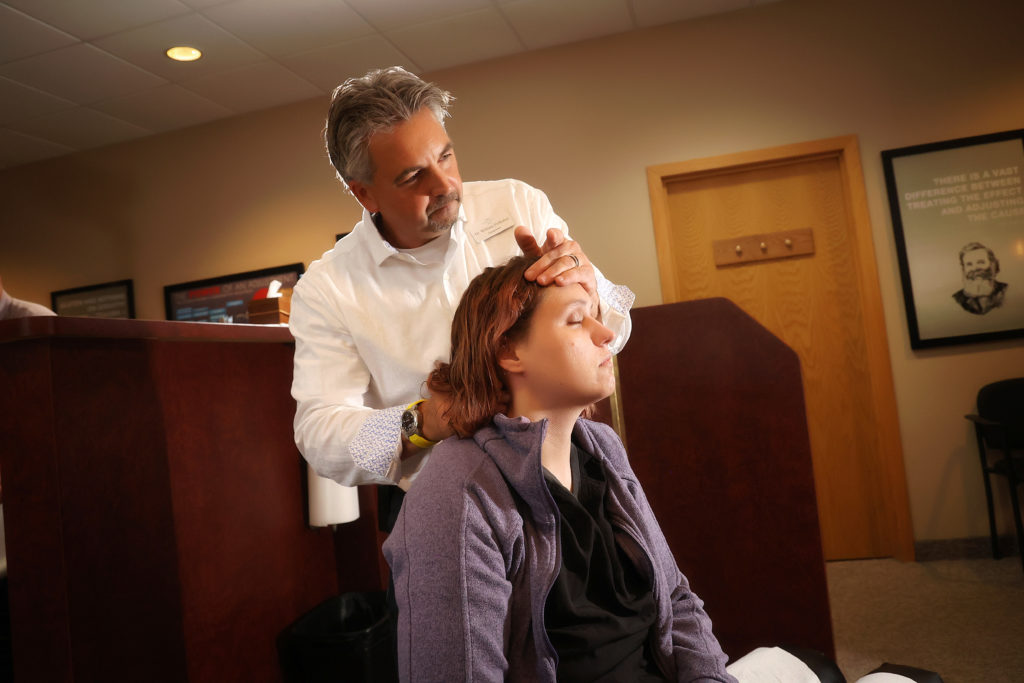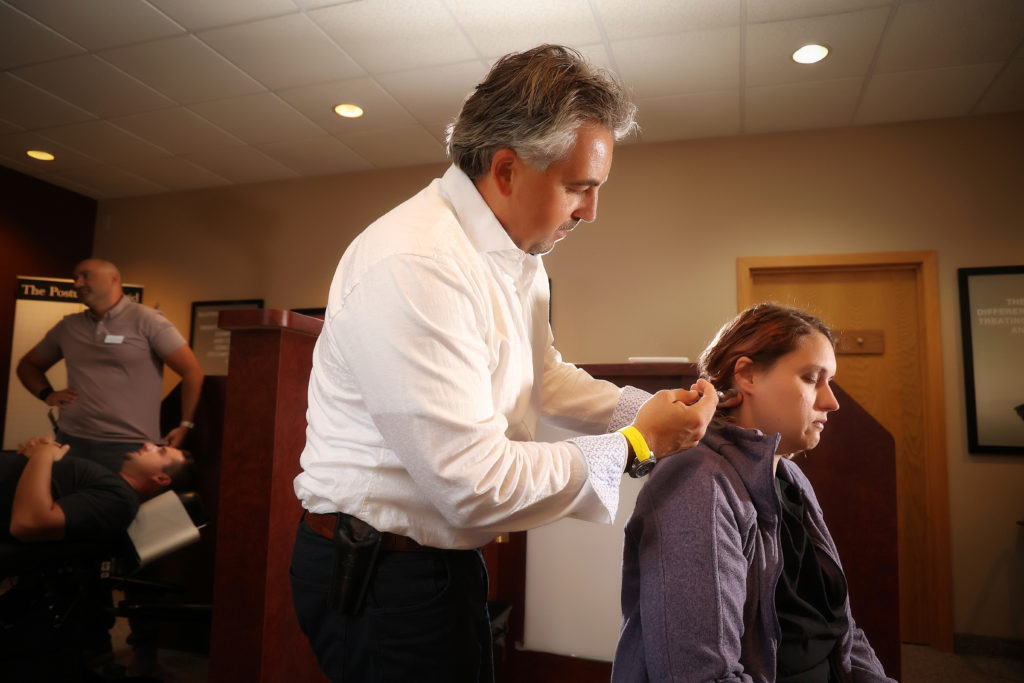The Different Types of Whiplash & Their Common Causes

Whiplash is a type of neck injury that occurs when the head is suddenly jerked forward or backward. The name “whiplash” comes from the snapping motion of the head, which can cause neck muscles and ligaments to stretch beyond their normal range of motion. The symptoms associated with this condition occur as the result of an accumulation of damage to various parts within your spine, including discs, space ligaments, or muscles.
While whiplash most often occurs during car accidents, it can also happen during other types of trauma, such as a fall or a blow to the head. This condition typically affects people who spend hours every day sitting at desks with their heads positioned forward due to this repetitive strain on muscles nearby as well as nerves sending signals up into your brain from those areas being overworked!
What Causes Whiplash?
The force of the impact damages the muscles, ligaments, and nerves in the neck, resulting in pain, stiffness, and other symptoms. In severe cases, whiplash can lead to permanent nerve damage or paralysis.
Whiplash may occur from:
- Car Accidents
When a car is hit from behind, the occupants can be subjected to a sudden, forceful jolt that can cause the neck and head to snap backward and forwards. This can result in damage to the muscles, tendons, and ligaments in the neck, as well as other tissues in the spine.
- Sport Injuries
Sports injuries are the most common type of injury that leads to whiplash. The players are often hit very hard in the head or neck area, which can lead to the head snapping back and forth rapidly.
- Physical abuse or assault
Physical abuse or assault is one of the most common causes of whiplash. The sudden, violent movement can damage the neck muscles and ligaments, causing pain and stiffness.
- Falls
Falls are a common cause of whiplash, especially falls from a height onto a hard surface. The impact of the fall can jolt the head and neck, causing the muscles and ligaments to stretch beyond their normal range of motion.
Most people with whiplash recover within a few months. If you have whiplash, it is important to see a doctor for an evaluation and treatment.

Types of Whiplash
- Cervical acceleration-deceleration (CAD) injury
This is the most common type of whiplash and occurs when your head is suddenly thrown forward or backward, causing the neck muscles and ligaments to stretch beyond their normal range. Symptoms may include neck pain, stiffness, headaches, and dizziness.
- Hyperextension injury
This type of whiplash occurs when your head is suddenly thrown backward, causing the neck to over-extend. Symptoms may include neck pain, stiffness, and headaches.
- Hyperflexion injury
This type of whiplash occurs when your head is suddenly thrown forward, causing the neck to over-flex. Symptoms may include neck pain, stiffness, and headaches.
- Whiplash-associated disorders (WAD)
This is a catch-all category for any type of whiplash that does not fit into one of the above categories. Symptoms may include neck pain, stiffness, headaches, dizziness, tinnitus (ringing in the ears), and vision problems.
Common Whiplash Signs & Symptoms
The symptoms of whiplash can vary but may include neck pain, stiffness, and headaches. Early diagnosis and treatment may help to reduce the severity of your symptoms and help you to recover more quickly.
- Neck pain and stiffness
Neck pain from whiplash can be caused by ligament sprains or muscle strains, but it’s also sometimes due to injuries in other parts of your spine like discs and joints.
- Headache
A neck muscle tightening or a nerve or joints of the cervical spine becoming irritated could cause headaches.
- Shoulder and/or upper back pain
If the neck’s soft tissues are torn or strained during whiplash, then sometimes that pain can also be referred to other sensitive areas like your back and shoulders.
- Fatigue
Due to a lack of energy, it is difficult for you to get through your day. You might be experiencing depression or stress which are taking their toll on how well people typically handle themselves mentally and physically!
- Tingling or numbness in the arms
Numbness and tingling in the arms can be caused by a variety of factors, ranging from nerve damage to poor circulation.
- Dizziness
The whiplash-related dizziness you’re experiencing could be from neck instability or even a concussion (mild traumatic brain injury).
Other Whiplash Symptoms:
- Vision problems
Vision problems are not limited to a single cause. They can result from any number of causes, including concussion or damage done to the optic nerve which carries vision signals from your eye into your brain so we know what’s happening around us visually!
- Ringing in the ears (tinnitus)
Tinnitus is a common condition that many people deal with on some level. The sound can be intermittent and minor or constant and highly distracting; it could come from whiplash injury to the part of your brain which controls hearing, nerve damage due either prolonged pressure against tissues in one ear like an inner-ear infection (otoscopy), swelling related issues such as hypertension, or even stress.
- Sleep disturbances
A person’s sleeping patterns can change dramatically after they’ve experienced whiplash-related factors like pain and stressors in their lives; this is also true for concussions that occur during an accident when hitting another car window at high speed (or anything else).
- Memory and/or concentration problems
Some people develop cognitive symptoms after a whiplash injury. These troubles could include difficulty with memory or thinking, and sometimes these issues show up soon after the event (in which case they’re likely due to brain trauma), while other times it can take hours/days before noticing any problems at all.
- Difficulty swallowing, chewing or speaking
Groaning and chewing are often painful because of the pressure put on muscles around your jaw when you open up to take a big bite or chew food. If these actions cause ruled neck pain, it could also indicate an injury in other areas such as the larynx (voice box) esophagus which makes swallowing difficult for some people who have had them happen before!

How Chiropractor in Minot Treated Whiplash
Chiropractors use a variety of techniques to treat whiplash, depending on the severity of the condition. These may include gentle stretches and exercises, massage, and manipulation of the spine. Chiropractors at CornerStone Chiropractic are trained to look for signs of whiplash and can provide treatment that can help lessen the symptoms.
1) Consultation
At your consultation, the chiropractor will ask you about your accident and your symptoms. They will also perform a physical examination. Based on this information, they will develop a treatment plan for you. Treatment for whiplash usually includes chiropractic adjustments, massage, and exercises.
2) Initial Treatment
The first phase of treatment is aimed at reducing pain and inflammation. This may include ice, heat, ultrasound, electrical stimulation, or massage. Your chiropractor will also likely give you some exercises to do at home.
The second phase of treatment is aimed at restoring a normal range of motion and function. This may include gentle stretching and exercises.
The final phase of treatment is aimed at preventing the recurrence of the problem. This may include education on posture, ergonomics, and stress reduction.
Chiropractor whiplash initial treatment typically takes several weeks. However, most people see significant improvement within the first few visits.
3) Spinal and Neck Adjustments
Even if you don’t feel pain right away, whiplash can cause serious damage to your spine and neck. Chiropractors are trained to spot these injuries and provide the necessary adjustments to ensure your long-term health.
This is the most common and effective chiropractic treatment for whiplash because re-aligning the spine and neck properly will relieve pain caused by nerve pressure, and inflammation as well. It will also help bring back proper blood flow to the area, allowing for greater ranges of motion.
4) Muscle Therapy
Chiropractic care can help to relieve pain and improve the range of motion in the neck. Muscle therapy may also be used to help relax tense muscles and reduce inflammation.
5) Long-Term Chiropractic Treatment
The best way to keep your spine healthy and aligned is with a chiropractic visit every so often. If you suffer from any sort of whiplash, we must maintain long-term health for us to prevent future injuries!
Chiropractor Treatment for Whiplash in Minot
Whiplash is a neck injury that often occurs during car accidents. The sudden movement of the head can cause damage to the vertebrae, muscles, and ligaments in the neck. Symptoms include pain, stiffness, headaches, and dizziness.
Chiropractors at CornerStone Chiropractic are experts in treating whiplash injuries. They use a variety of techniques to restore mobility to the neck and relieve pain. If you have been injured in a car accident, it is important to seek treatment from a chiropractor as soon as possible.
